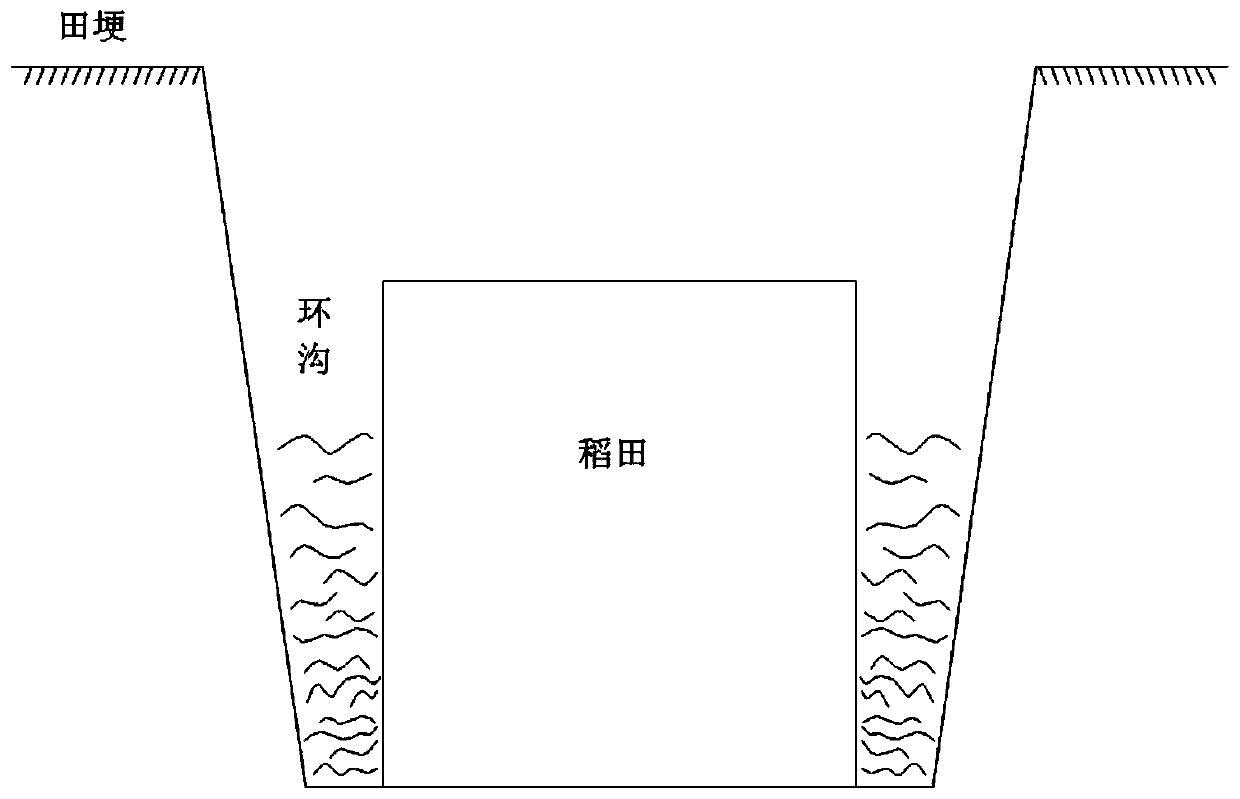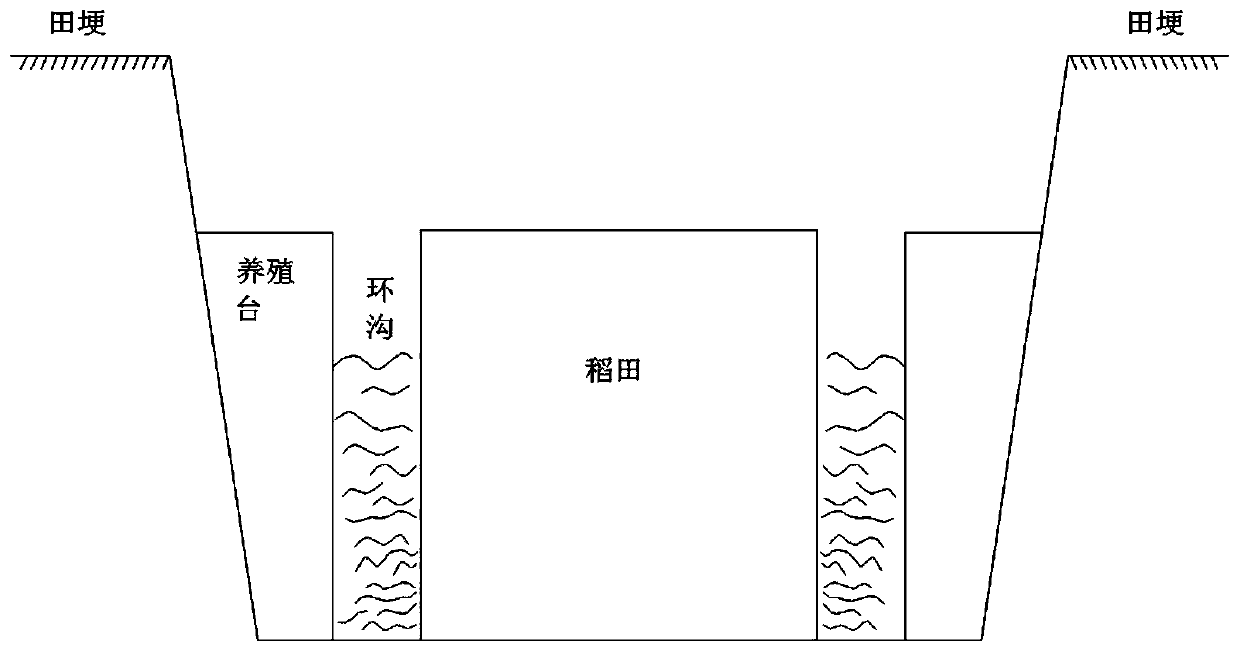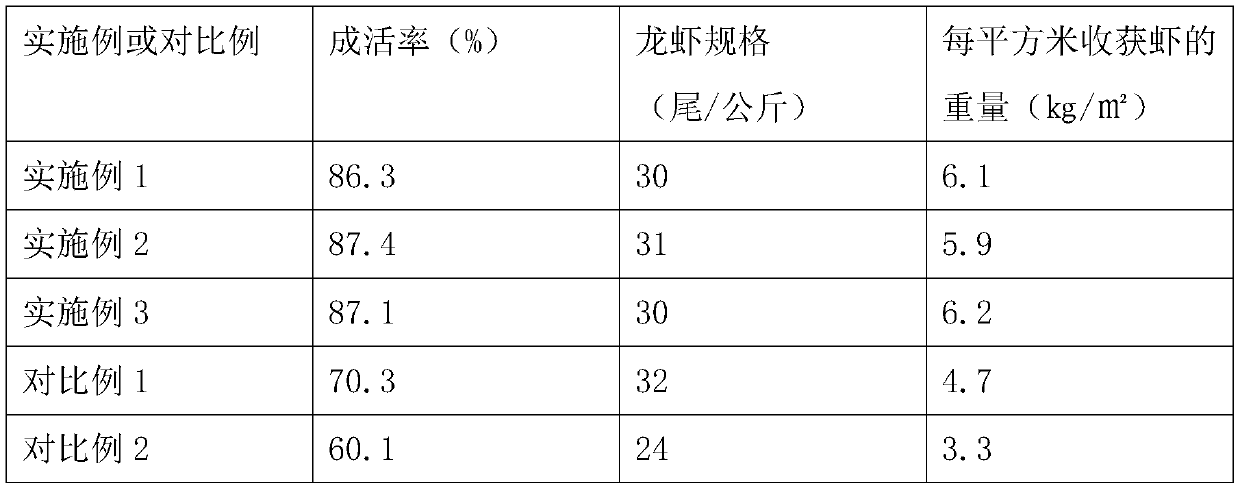Lobster cultivation method based on rice fields and lotus roots
A lobster and paddy field technology, applied in the field of lobster farming, can solve the problem of low yield of lobster and lotus seeds, and achieve the effects of good drainage and irrigation conditions and sufficient water sources.
- Summary
- Abstract
- Description
- Claims
- Application Information
AI Technical Summary
Problems solved by technology
Method used
Image
Examples
Embodiment 1
[0049] Embodiment 1 discloses a kind of lobster culture method based on paddy field and lotus root, comprises the following steps:
[0050] 1. Selection and reorganization of planting fields;
[0051] 2. Open ring ditch on both sides of the planting field. During the excavation of the ring ditch, increase the breeding platform on the slope. The breeding platform is built by soil, and the shrimp seedlings are placed in the ring ditch;
[0052] 3. In winter, sprinkle straw in the ring ditch;
[0053] 4. Harvest rapeseed flowers from March to April of the second year;
[0054] 5. Catch and sell the shrimp seedlings in 90% of the ring ditch, leave 10% of the shrimp seedlings in the ring ditch for breeding, and remove the shrimp seedlings that have not been completely caught;
[0055] 6. Weed the field where the rapeseed has been harvested, and then use a rotary tiller to reorganize the field where the rapeseed has been harvested, plant lotus seeds to form a lotus root field, in ...
Embodiment 2
[0068] Embodiment 2 discloses a kind of lobster cultivation method based on paddy field and lotus root, comprises the following steps:
[0069] 1. Selection and reorganization of planting fields;
[0070] 2. Open ring ditch on both sides of the planting field. During the excavation of the ring ditch, increase the breeding platform on the slope. The breeding platform is built by soil, and the shrimp seedlings are placed in the ring ditch;
[0071] 3. In winter, sprinkle straw in the ring ditch;
[0072] 4. Harvest rapeseed flowers from March to April of the second year;
[0073] 5. Catch and sell the shrimp seedlings in 90% of the ring ditch, leave 10% of the shrimp seedlings in the ring ditch for breeding, and remove the shrimp seedlings that have not been completely caught;
[0074] 6. Weed the field where the rapeseed has been harvested, and then use a rotary tiller to reorganize the field where the rapeseed has been harvested, plant lotus seeds to form a lotus root field,...
Embodiment 3
[0087] Embodiment 3 discloses a kind of lobster cultivation method based on paddy field and lotus root, comprises the following steps:
[0088] 1. Selection and reorganization of planting fields;
[0089] 2. Open ring ditch on both sides of the planting field. During the excavation of the ring ditch, increase the breeding platform on the slope. The breeding platform is built by soil, and the shrimp seedlings are placed in the ring ditch;
[0090] 3. In winter, sprinkle straw in the ring ditch;
[0091] 4. Harvest rapeseed flowers from March to April of the second year;
[0092] 5. Catch and sell the shrimp seedlings in 90% of the ring ditch, leave 10% of the shrimp seedlings in the ring ditch for breeding, and remove the shrimp seedlings that have not been completely caught;
[0093] 6. Weed the field where the rapeseed has been harvested, and then use a rotary tiller to reorganize the field where the rapeseed has been harvested, plant lotus seeds to form a lotus root field,...
PUM
 Login to View More
Login to View More Abstract
Description
Claims
Application Information
 Login to View More
Login to View More - R&D
- Intellectual Property
- Life Sciences
- Materials
- Tech Scout
- Unparalleled Data Quality
- Higher Quality Content
- 60% Fewer Hallucinations
Browse by: Latest US Patents, China's latest patents, Technical Efficacy Thesaurus, Application Domain, Technology Topic, Popular Technical Reports.
© 2025 PatSnap. All rights reserved.Legal|Privacy policy|Modern Slavery Act Transparency Statement|Sitemap|About US| Contact US: help@patsnap.com



